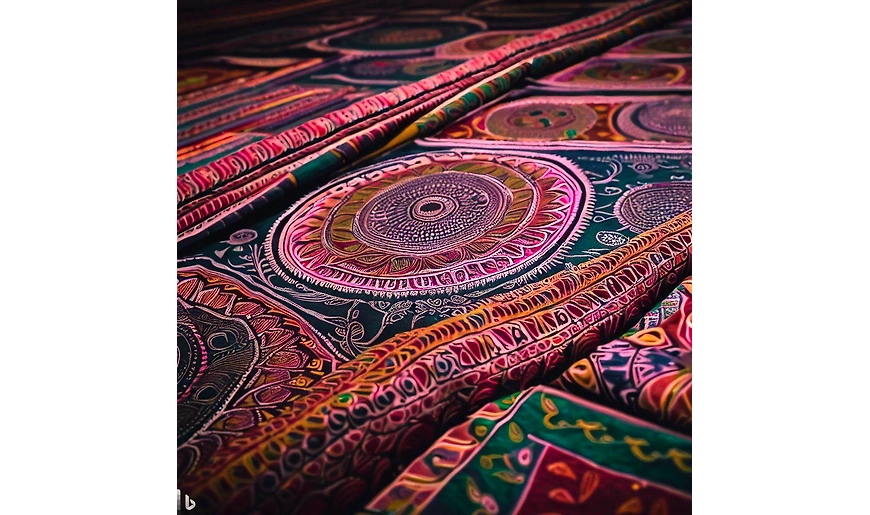The Great Indian Textile: A Rich Cultural Heritage
| 05 May 2023
The Indian Textile by: SUJNI INDIA
India has a rich and diverse history of textile manufacturing that dates back thousands of years. The country's textiles are renowned for their exquisite designs, vibrant colors, and intricate weaving techniques. From the cotton sarees of Gujarat to the silk saris of Kanchipuram, the Indian textile industry is a treasure trove of unique and beautiful creations.
The textile industry has played a significant role in the Indian economy for centuries, with exports dating back to ancient times. In the 17th and 18th centuries, the East India Company played a key role in promoting Indian textiles in Europe, and they became a popular choice among the European elite.
One of the unique features of Indian textiles is the use of natural fibers like cotton, silk, and jute. These fibers are processed and woven into fabrics using traditional methods that have been passed down through generations of weavers. Some of the most popular weaving techniques include handloom, block printing, and tie-dye.
The diversity of India's textile industry can be seen in the different regions of the country, each with its own distinctive style of weaving and embroidery. For example, the intricate embroidery of Lucknow's chikankari and the vibrant colors of Rajasthan's bandhani are just a few examples of the diverse range of textiles that can be found across the country.
The Indian textile industry has faced numerous challenges over the years, from the decline of handloom weaving to competition from cheaper synthetic fabrics. However, there has been a renewed interest in traditional textiles in recent years, driven by a growing awareness of the importance of preserving India's cultural heritage.
The government has also taken steps to support the industry, with initiatives such as the Handloom Reservation Act, which reserves certain handloom products exclusively for sale by handloom weavers. This has helped to protect the livelihoods of thousands of weavers across the country.
In conclusion, the Indian textile industry is a testament to the country's rich cultural heritage and its longstanding tradition of craftsmanship. With its diverse range of fabrics, colors, and designs, it continues to inspire and captivate people around the world. As we celebrate India's textile legacy, we must also continue to support and promote the industry to ensure that it remains an integral part of the country's economy and cultural identity.
SUJNI INDIA
05/05/2023
sunit shukla
sunit@sujni.in